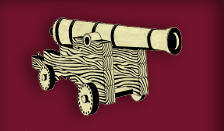 |
|||||||||||
|
|||||||||||
|
|
|||||||
|
|
||||||
The Concealed Handgun ManualExcerpt from Chapter One
Twenty-four-year-old (Joe) Zamudio was not supposed to be anywhere near the Safeway grocery store in Tucson on January 8, 2011. He normally works Monday to Friday at his mother’s art gallery, selling paintings and delivering them to customers. Saturday was supposed to be his day off but his mother asked him to come in to the gallery to help her with a special event. He and his mother finished breakfast at a nearby bakery about 10 a.m. He got into his truck and drove across the shopping center parking lot to the Walgreen’s drug store next to the Safeway. As usual, he was accompanied by his dog Buddy, a black Labrador mix, and as usual he had his gun, a Ruger P-95 semi-automatic, in an inside jacket pocket. As usual the fifteen-round magazine had only about eight rounds in it. “I don’t keep my clips (magazines) fully loaded,” Zamudio said. “That morning, who knows why, I chambered a round,” he said. Zamudio is left-handed so carries the gun in his right-hand inside coat pocket for a cross draw. As he walked towards Walgreens, he noticed a crowd of people around a table in front of the Safeway. Although he didn’t know it at the time, it was an outreach event where Congresswoman Gabrielle Giffords was meeting with constituents. “I thought I wonder what’s going on,” Zamudio said. He decided to get his cigarettes first then see what had attracted the crowd. “That decision is the hardest one for me because I feel like if I hadn’t gone into the store first and I had gone down there, then I would have been in a better position maybe to stop him sooner,” Zamudio reflected. He went into the store and got his cigarettes. He had swiped his debit card to pay for them but hadn’t finished the transaction when he heard the shots. There was a burst of them, fired very fast, too fast for accurate shooting, he said. “He was shooting at a pile of people. They had nowhere to move: there was a wall behind them, columns in front, they were penned in there. It was literally like shooting fish in a barrel. He didn’t have to aim, that’s why he was able to hurt so many people so fast.” Zamudio realized immediately that what he was hearing was gunfire. He ran out through the door of Walgreens, heading for the sound of the shooting. “I know when I came through the doorway, I had my hand on my gun and the safety was off,” he said. He did not draw his gun. A man outside the door was shouting: “Shooter, shooter, get down.” Zamudio ran past him towards the group of people. “This is where it really got scary,” he said. Excerpt from Chapter Two
“I’m not the kind of guy to read people, but I thought that my employee must know the guy ‘cause of the way the guy was talking to him,” Stroud said. He saw the employee step to one side and point at the store’s video security camera. The man made some excuse about going to get his drill and left. When the employee came over and told him what had happened, Stroud was concerned enough to call the police. The police found the man who was carrying a .357-caliber revolver and several bags of crack cocaine, Stroud said. They arrested him. Later Stroud told his father and other family members about the incident, so they would be aware of the possible dangers. He also bought several handguns and hid them in the store with one behind the counter.
“It was a very bad situation that was sort of on the heels of all this. So that’s when we got our guns and started being prepared ‘cause there were a lot of robberies,” he said. “I had guns previously, but now they are stashed where I can get to one.” Several months later, in the early summer of 2001, Stroud had a particularly disturbing dream. He dreamt that he was in his store when a man came in and shot at him. He fired one round in return and the man shot again. “In this dream, I saw something fly out of my chest, so I looked down and didn’t feel anything, but there was blood coming out of my chest. And I died. I woke up at the point that I died,” Stroud said. The dream upset him to the point that he told his pastor about it. The pastor suggested that God was trying to tell him something – that perhaps he was going to get robbed, Stroud said. Nothing happened for about a month, until Friday, July 20, 2001. Shortly before 5 p.m., Stroud was behind the counter working on a report. One employee was also behind the counter, sitting on the floor counting drill bits. Another was over in a corner behind some toolboxes. Stroud said he had just finished talking to Jerry Wilson, a customer and off-duty police officer from nearby Bossier City. Wilson, who was unarmed at the time, was looking at a jointer planer, they had been discussing, Stroud said. His wife would have been working behind the counter but they had adopted a baby two weeks before and she was at home, he said. A man entered the store. Wilson later described him as a black male, about 17 years old, five feet six inches tall, weighing about 135 pounds. He was wearing a dark blue print shirt, dark blue golfer type ball cap. He was holding a dark blue or black bandana or “do-rag” to his face covering his mouth and nose. Stroud was conscious that a man had entered the store and was making a lot of noise. “When I’m working, I like tune out the world,” Stroud said. “I was doing my work, not paying attention or even looking up for a minute. I was thinking: as soon as I get to where I need to be I’m gonna see what this loud customer wants.” When finally, Stroud did look up the man was about eight feet away pointing a .38-caliber snub-nose revolver at him and yelling at him that he wanted the money from the cash register. “He was obviously on drugs, upset at how I was ignoring him, and about to explode. So when I looked up, he had that gun on me. I thought he was going to shoot us all.” Stroud had an Arminius .357 Magnum caliber revolver loaded with .38 Special +P cartridges just under the counter. He picked up the gun just as Wilson, the police officer, made a movement. Wilson later told investigators that the would-be robber pointed the gun at him and told him not to move. He said that the man yelled at Stroud that if he didn’t give him all the money, he would shoot him (Wilson). The distraction gave Stroud time to cock the gun and bring it up. “When I pulled my gun up, he started coming at me, and when he did, I didn’t aim or nothing – boom. When I did that, he shot and hit the wall,” Stroud said. He dove down behind the counter on top of the employee who had been counting drill bits. When Stroud got up he was in time to see the robber running out of the door. “I shot over his head deliberately, wanting him out of my store,” he said. That bullet shattered a window in the front of the store. At the time, Stroud didn’t know whether his first shot had hit the man or not. After he had gone, Stroud did find the revolver the man had dropped in his haste to leave. The robber was later identified as 19-year-old Deandre Lias, according to police reports. He was picked up by two friends and driven to Louisiana State University Medical Center where they dropped him off. Stroud’s bullet had hit him in the center of the chest between his nipples, according to the police report. He died shortly after his arrival at the hospital. His friends told police Lias had been hanging out with them and had gone to get a hamburger. When he didn’t return they had gone looking for him. When they found him walking along the street, he was patting his chest with both hands and staggering. One of the friends told police he thought Lias was playing around but he collapsed into the car and said: “Carry me to the hospital. I been shot, and go get my mama.” Lias was known to several of the police officers involved in the subsequent investigation. At the time of his demise, he was a fugitive, wanted on a warrant for a charge of attempted murder. He was also a suspect in seven armed robberies in the previous month, according to the police report. The district attorney determined the shooting was a justifiable homicide and Stroud was not charged. Excerpt from Chapter Ten Jim Eichelberg ran a trapline of vending machines in northwest Houston. He serviced these machines early in the morning before the traffic got too heavy. He often had a few thousand dollars on him from the vending machines, so he had a Texas concealed-handgun license and usually carried a gun. The gun was a snub-nosed Smith & Wesson Model 37 five-shot revolver which weighed 13.5 ounces. In it he carried MagSafe rounds in .38 caliber. These rounds kick less than regular ammunition in the light gun and are designed to fragment on contact so they won’t go through three apartment walls and hit a little old lady two rooms away. Eichelberg had been shooting most of his life. He practiced with his father-in-law at least once a week, he said. That morning, he left his home about 5 a.m. when it was still dark and started his route. About 5:45 a.m., the 49-year-old Eichelberg was driving his 1985 Ford van east on Milwee towards the Northwest Freeway. Just before he reached the stop sign at the freeway service road, he passed a man walking in the direction he was driving. Eichelberg pulled up at the stop sign and waited for the traffic to clear on the service road. As he waited, he looked in his rearview mirror but he couldn’t see the man he had just passed. Wondering why the man had disappeared, Eichelberg looked at the rearview mirror on the passenger side. He saw the man running along the passenger side of the van. The man was holding a revolver in his right hand. “You could see that gun. It was almost like there was a spotlight on it because the street light down the street was reflecting off that gun,” Eichelberg said. “I got a real good look at that gun.” Eichelberg had no doubt that the man was going to try to rob him or hijack his van. His gun was on the floor of the vehicle under his jacket and a mass of paperwork. He groped desperately for the gun. By the time he found it, the man was yelling at him through the passenger door window. “He had his face against the window. His nose was almost touching it and he had the gun next to his head,” Eichelberg said. The man was later identified as James Turner, 32, a skinny black parolee who was dressed all in black. Turner was shouting at Eichelberg and pointing the revolver at him through the window. However, with the noise of the traffic on the service road and the windows being closed, Eichelberg couldn’t hear what he was saying. “I didn’t figure he was there to sell me newspapers.” Eichelberg brought his gun up and fired one shot at Turner. The window shattered and Turner’s face disappeared. Eichelberg thought he had hit him but he wasn’t sure. He was deaf and half-blinded by the explosion of his gun inside the van. He was aware he was not in a good position if the man came back so he jumped out of the van. He started running towards the back of the van, still holding his revolver. Eichelberg was hoping to put some distance between himself and his would-be attacker. Turner apparently had the same idea. He started running back the way he had come. The two men met at the back of the van… |
|||||||
|
|||||||
Publications | Buy | Speaking | Articles | Resources | About | Contact |
|||||||


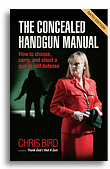


 This Book Could Save Your Life!
This Book Could Save Your Life! 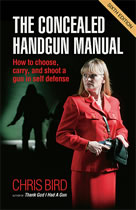
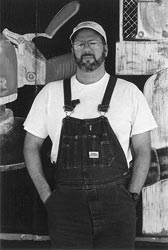 Bill Stroud was a Baptist Youth Minister when he took over the Tool House (in Shreveport, Louisiana) from his father. In early December 2000, the area suffered from a rash of armed robberies, he said. Although his store wasn’t hit, one incident concerned him. He was working behind the counter when a man came in and started talking to one of his employees while standing behind him.
Bill Stroud was a Baptist Youth Minister when he took over the Tool House (in Shreveport, Louisiana) from his father. In early December 2000, the area suffered from a rash of armed robberies, he said. Although his store wasn’t hit, one incident concerned him. He was working behind the counter when a man came in and started talking to one of his employees while standing behind him.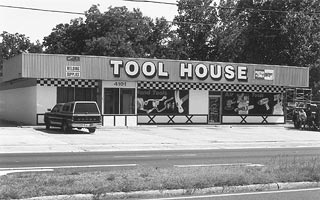 Just before Christmas that year, Stroud’s second cousin was raped and murdered during a car-jacking incident in southern Louisiana.
Just before Christmas that year, Stroud’s second cousin was raped and murdered during a car-jacking incident in southern Louisiana.